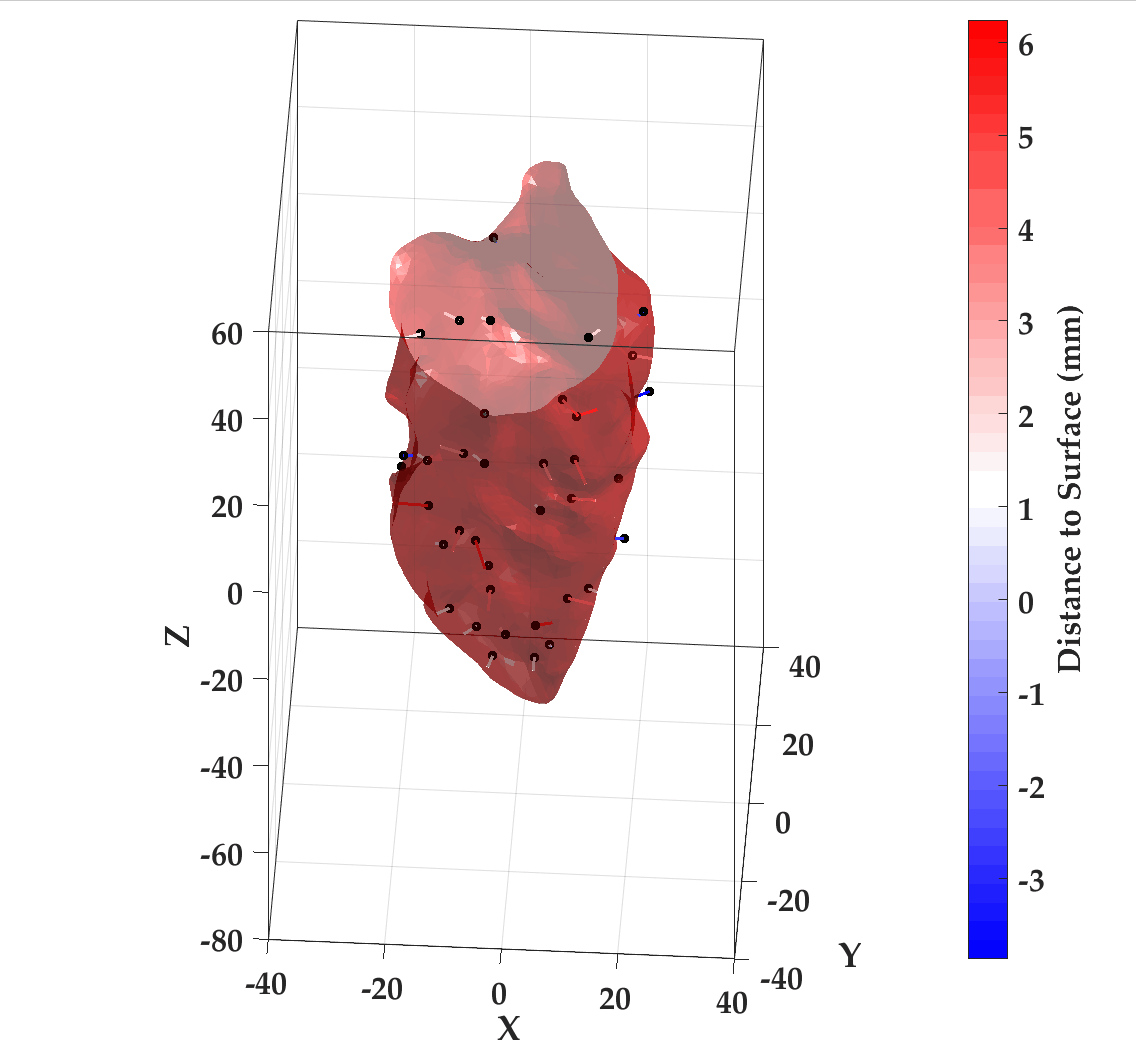
Research Highlights
Research Highlights


MitralSimulator

Ventricle Top View

Heart Mold Creation Time Lapse

Robotic Operation Game
-
Working with amazing colleagues at Rochester Institute of Technology, University of Connecticut Health Center, Oklahoma State University, and Iowa State University, we produced the following comprehensive review article on engineering tools for wound healing:
https://doi.org/10.1063/5.0173663
The article was selected as the Applied Physics Reviews featured article for April 2024!

-
After well over a year's worth of effort, our work on mitral annulus motion simulation was recently published in the IEEE Transactions on Medical Robotics and Bionics:
-
An abstract of our work on mitral valve motion simulation was selected as one of the top three abstracts at the 2021 Cardiovascular Implant Durability Conference (CVID) in Pacific Grove, California on October 12. This conference was well attended by industry leaders, academic researchers, and FDA regulators. Carter Gaulke presented our work to this esteemed audience! The full conference program and additional details can be found here. The title of Carter's talk was
"Design of a Mitral Annulus Motion Simulator for Accelerated Structural Testing of Mitral Repair and Replacement Devices"
-
The work of Professor Secord and Professor Koerner was featured on the website Advances in Engineering: https://advanceseng.com/measuring-voice-coil-impedance-power-space-budget/
-
Professor Secord gave an interview to the Aliance of Advanced Biomedical Engineering (AABME) at the Design of Medical Devices Conference (April 2018). You can listen to the interview here.
-
The BRaM team was featured in an article in the St. Thomas magazine that described our work on tunable resonance cardiac energy harvesting. The basic idea is to create an implantable cardiac device that can adapt to the heart rate of the patient to maximize the ability to harvest energy for use in powering devices such as pacemakers. Read more here.


-
Milad, Austin, and Amanda were also featured in this recent commercial for the St. Thomas School of Engineering! Take a look:
-
We developed a molding process to create silicone versions of patient-specific hearts from multi-phase CT images. The images below shows an example of the mold and the resulting left atrium and ventricle.


Mechanical Simulation of Cardiac Motion
General Description:
Implantable cardiac medical devices are subjected to rigorous mechanical testing prior to market approval. This testing, however, often fails to faithfully recreate the stochastic and complex nature of the deformations imposed in vivo. This research aims to create high fidelity reconstructions of cardiac motion using advanced sensor and actuator technology.
Current Focal Points:
-
Implement PID control of temperature in simulated heart test chamber
-
Implement feedback control to achieve high-fidelity and high frequency deformations
-
Apply mathematical techniques (e.g., spherical harmonics) to describe heart shapes
-
Complete design integration, performance characterization, and test cases
Recommended Skills for Interested Students:
Do not worry if you do not have all of the skills below; there are multiple facets of the project and a single student is not expected to have proficiency in all areas.
-
Image processing and coding in MATLAB
-
OpenCV in Python
-
Electronics
-
PID control


Example of our stereo imaging results for the molded left ventricle
Transcatheter Valve (TCV) Sensor Development
General Description:
Surgical valve replacement is increasingly shifting towards minimally-invasive, transcatheter valve (TCV) procedures. Market released TCVs are passive mechanical devices that perform the singular function of maintaining vessel patency or valve orifice area. The present state of TCV technology leaves an unmet need for continuously monitoring patency, patient vital signs, and disease state progression. This work seeks to fundamentally shift the technological paradigm in TCV technology by bringing instrumentation and sensing into a realm historically dominated by purely mechanical TCV designs.
Current Focal Points:
-
Develop a test apparatus to pressurize a prototype TCV
-
Design a prototype delivery cathether for sensor delivery to a TCV frame
-
Conduct testing on initial prototype sensors
-
Apply combinatoric techniques for frame fracture detection
Recommended Skills for Interested Students:
Do not worry if you do not have all of the skills below; there are multiple facets of the project and a single student is not expected to have proficiency in all areas.
-
Proficiency in SolidWorks
-
Proficiency in mechanical fabrication: machining, laser cutting, 3D printing
-
Basic understanding of I2C sensors
-
Electronics
-
Data analysis in MATLAB

Concept for a stent-based sensor network to monitor patient vital signs

Illustration of how an I2C sensor network can be implemented in a TCV
Mathematical Design of Experiments and Combinatorics
General Description:
Current experimental design practice heuristically assigns physical variables to experimental variables (e.g. in a fractional factorial matrix). Additionally, current design of experiment (DoE) methodologies are not well suited to use with large and computationally intensive models such as structural or thermal finite element analysis. This research aims to fill theoretical gaps and provide practical, yet rigorous, design and experimentation tools for practicing engineers.
Focal Points:
-
Optimal naming schemes and Bayesian analysis for design of experiments
-
Finite difference methods for experimental design and minimal trade off analysis
For Interested Students:
-
This research is mathematically rigorous and is well suited to St. Thomas undergraduate students in mathematics, statistics, or related disciplines.
General Robotics and Pedagogy
An ecclectic, yet thematically consistent, list of additional research interests and opportunities are provided below:
Robotics Focal Points:
-
Underwater robotics: communication, localization, and actuation
-
Deep water robotics
Pedagogy Focal Points:
-
Statistical knowledge gaps in current engineering curricula
-
Development of low-cost two-link robotics manipulators for introducing robotics
-
Teaching digital control principles using the Arduino and Raspberry Pi
For Interested Students:
-
This research spans all St. Thomas engineering disciplines: electrical, mechanical, and computer. Opportunities exist on multiple facets of this research for students in these majors (both at the undergraduate and graduate levels).